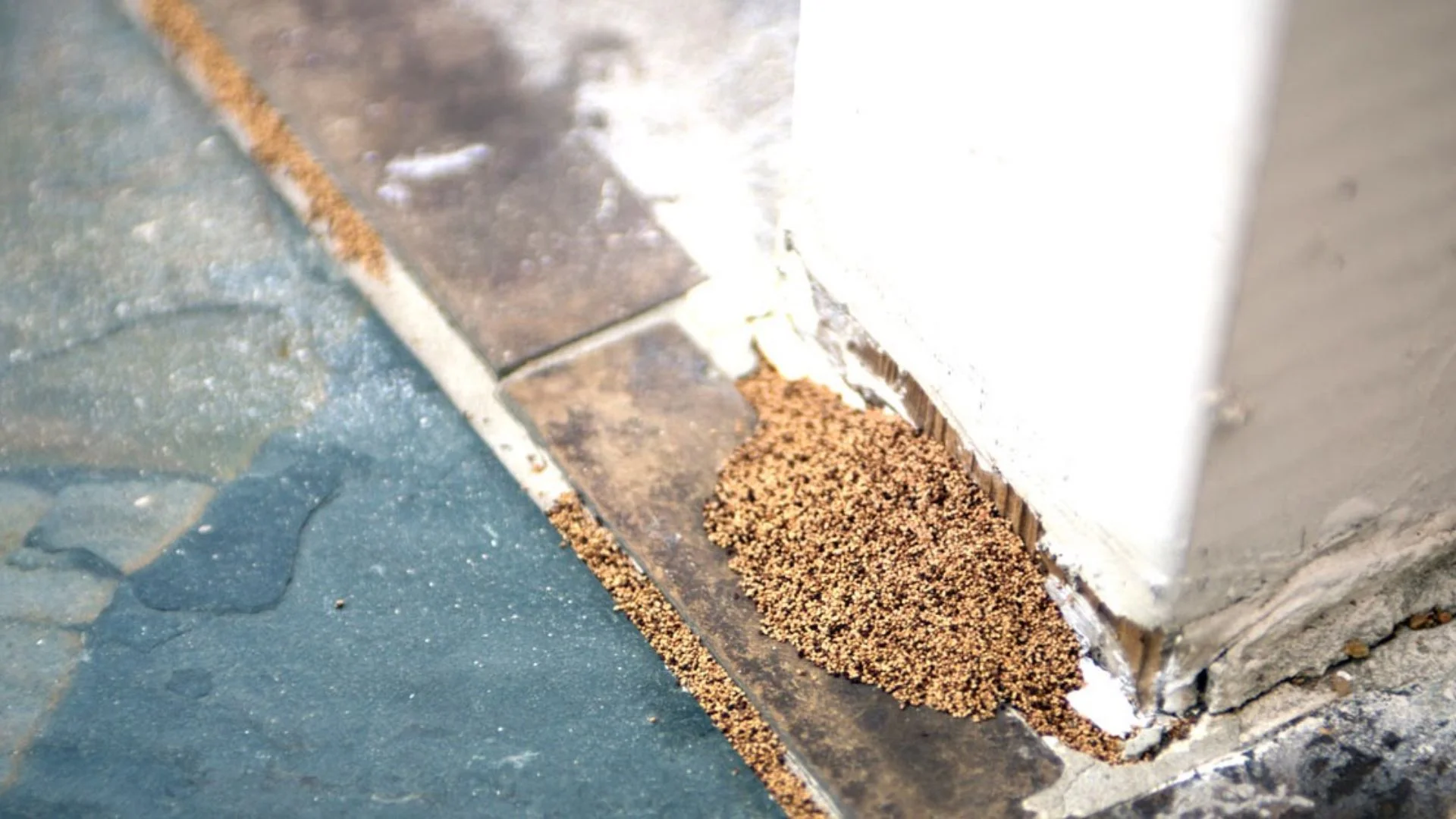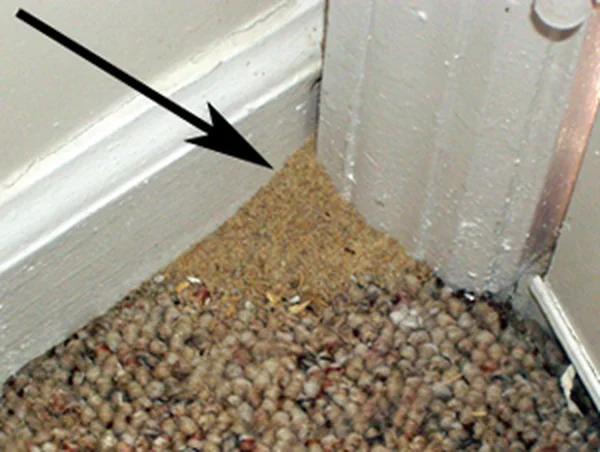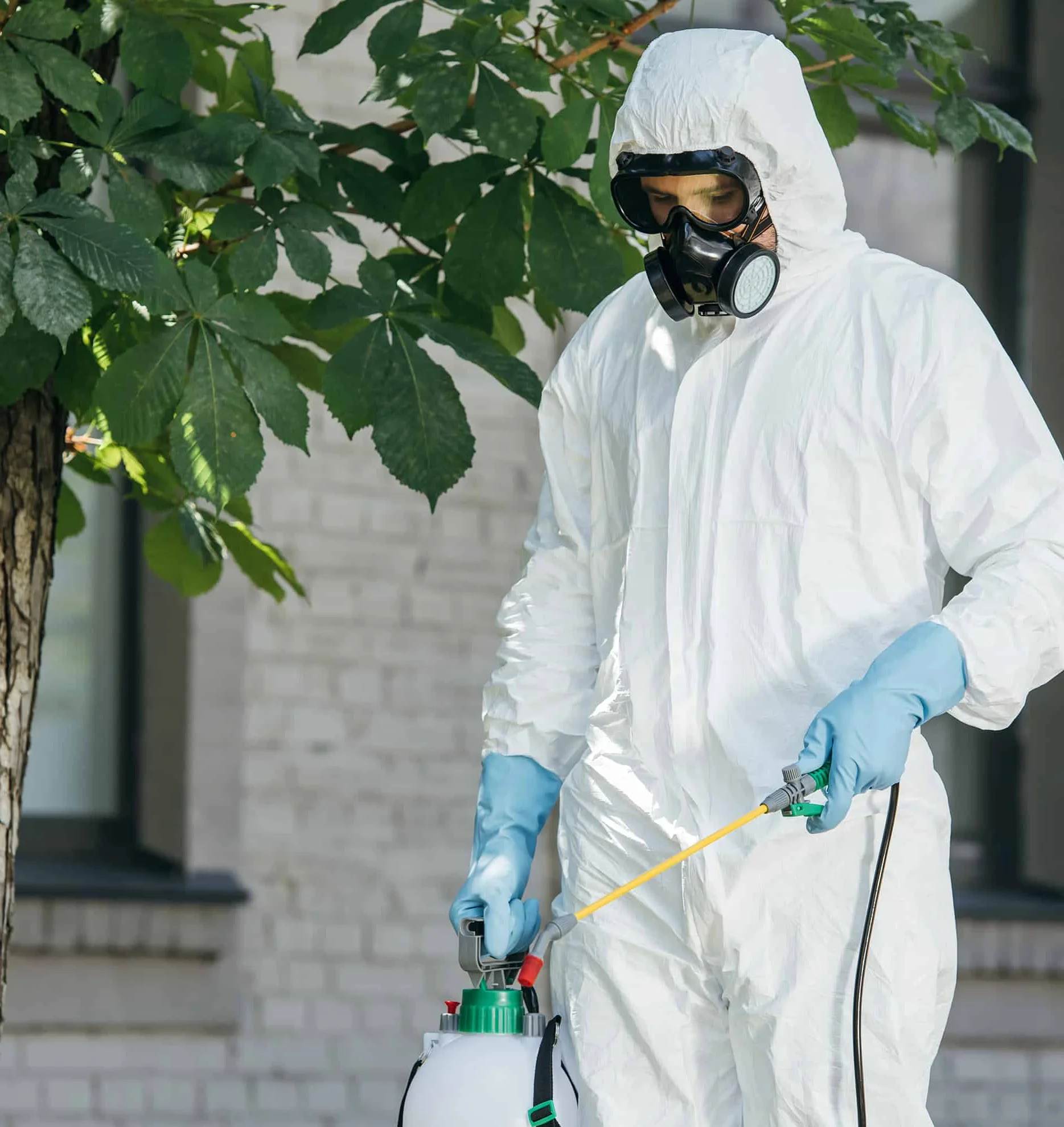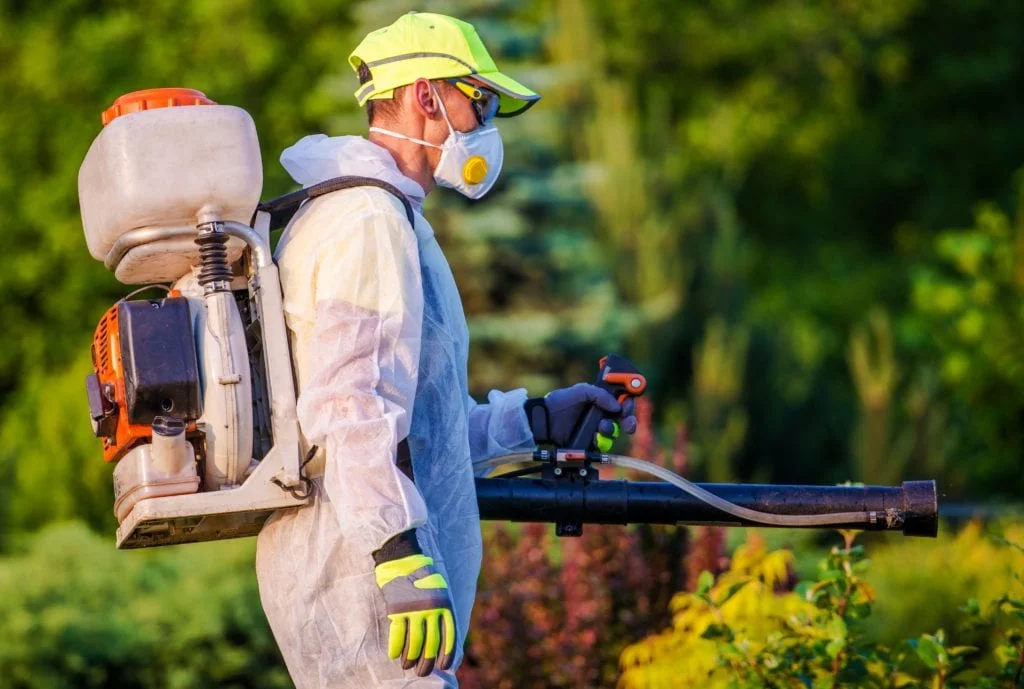From the coastal Lowcountry to the rolling Piedmont, South Carolina's diverse landscapes create ideal environments for a wide variety of pests. The state's subtropical climate with long, hot summers and mild winters provides perfect conditions for year-round pest activity, while abundant rainfall and humidity create moisture issues that many pests thrive on. Professional pest control in South Carolina requires understanding these regional factors – the coastal marshes, dense forests, and diverse urban-rural mix all contribute to unique pest challenges across the state.
Homeowners and businesses throughout South Carolina face ongoing challenges from pest infestations that can damage property, impact health, and disrupt daily life. That's why many residents rely on professional exterminators who understand the region's specific pest pressures. Local experts recognize that both preventive approaches and targeted treatments are essential to maintaining pest-free properties in the Palmetto State's pest-friendly climate. In this guide, we'll explore common South Carolina pest problems, effective management strategies including eco-friendly pest solutions, and why partnering with local professionals offers the most effective protection for your home or business.
Facing a pest emergency? Our South Carolina team offers
emergency pest control
24/7 and comprehensive
pest inspections to protect your property.
Schedule now for prompt, reliable service!
Pest Control Challenges Specific to South Carolina
South Carolina's environment creates distinct pest control challenges that require specialized knowledge and approaches. Here's why pest control in South Carolina presents unique demands:
-
Subtropical climate South Carolina's warm, humid climate creates exceptionally long active seasons for many pests. While northern states might experience winter die-offs that naturally reduce pest populations, South Carolina's mild winters allow many insects to remain active nearly year-round. The state's lengthy warm season, particularly in the Lowcountry and Midlands regions, creates conditions where mosquitoes, termites, cockroaches, and ants can thrive from early spring through late fall, and sometimes even during winter months.
-
Coastal environments The state's extensive coastline and marsh areas create unique pest pressures in Charleston, Beaufort, Hilton Head, and other coastal communities. Salt marsh mosquitoes, sand flies, and palmetto bugs (American cockroaches) thrive in these humid coastal environments. Additionally, the sandy soil conditions in coastal regions create ideal tunneling conditions for subterranean termites, making coastal properties particularly vulnerable to termite infestations.
-
Diverse landscapes South Carolina's varied geography—from coastal plains to the Piedmont and Blue Ridge Mountains—creates multiple ecosystems where different pest species thrive. Fire ants dominate the Midlands and Lowcountry, while the Upstate deals with different ant species adapted to cooler temperatures. Wildlife pest pressures also vary significantly, with coastal regions facing different nuisance wildlife challenges than the more forested Upstate areas.
-
High moisture levels The state's average annual rainfall of 49 inches, combined with high humidity, creates moisture conditions that support mold, wood rot, and moisture-loving pests. Dampwood termites, carpenter ants, millipedes, silverfish, and cockroaches all thrive in moisture-rich environments, creating year-round pressure on South Carolina properties, particularly in newer neighborhoods built on recently cleared woodland areas.
-
Invasive species South Carolina has become home to numerous invasive pests that lack natural predators and create persistent management challenges. Fire ants, Formosan termites, Asian tiger mosquitoes, and more recently, the emerald ash borer and spotted lanternfly are examples of non-native species that require specialized control approaches. The state's busy ports, particularly Charleston, create entry points for new invasive species, making vigilant monitoring and management essential.
These factors make comprehensive, year-round pest prevention particularly important for South Carolina property owners. Regular inspections and preventive treatments, combined with targeted intervention when needed, provide the most effective defense against the state's persistent pest challenges.
Common Pests in South Carolina
South Carolina's climate and diverse ecosystems support a wide variety of persistent pests. Here are the most common invaders that homes and businesses throughout the state encounter:
Termites
Termite inspection being performed in Charleston
Termites represent one of the most significant pest threats to South Carolina properties, causing millions of dollars in damage annually. Eastern subterranean termites are found throughout the state, while the more aggressive Formosan termites have established colonies in coastal areas, particularly Charleston and Beaufort counties. These destructive pests build underground tunnels and can remain hidden within walls and foundations, causing extensive damage before signs become visible.
South Carolina's combination of warm temperatures, high humidity, and sandy soils creates ideal conditions for termite activity. In many areas, termite pressure is so high that comprehensive termite inspection and prevention are considered essential aspects of property maintenance. Professional termite management typically includes soil treatments to create protective barriers, monitoring systems to detect activity, and in some cases, targeted treatments to eliminate existing colonies. For structures already experiencing termite damage, specialized treatment protocols combined with repair recommendations help address both the infestation and its effects.
Mosquitoes
Mosquito treatment in a Columbia residential property
With over 60 species of mosquitoes documented in South Carolina, these biting insects create significant discomfort and health concerns throughout the state. The Asian tiger mosquito and southern house mosquito are particularly common in residential areas, while salt marsh mosquitoes plague coastal communities. Beyond being a nuisance during outdoor activities, mosquitoes can transmit serious diseases like West Nile virus, Eastern equine encephalitis, and La Crosse encephalitis, all of which have been detected in South Carolina.
The state's abundant rainfall, numerous waterways, and humid conditions create ideal breeding habitat for mosquitoes nearly year-round, especially in the Lowcountry where the active season can extend from February through November. Professional mosquito control typically combines treating resting areas in vegetation with larvicide applications in standing water that cannot be eliminated. For residential properties, comprehensive mosquito management programs often include monthly treatments during peak season, along with recommendations for reducing breeding sites around the home.
Fire Ants
Fire ant treatment in a Greenville yard
Red imported fire ants have firmly established themselves throughout South Carolina, creating painful and potentially dangerous situations for residents and visitors. These aggressive ants build distinctive mounded nests in lawns, parks, and landscaped areas, and will vigorously defend their territory when disturbed. Their painful stings can cause intense burning and itching, and for those with allergies, potentially serious reactions requiring medical attention.
Fire ants thrive in South Carolina's climate, with the warmest regions supporting multiple mating flights annually, allowing new colonies to establish regularly. Professional fire ant management typically employs a two-pronged approach: broadcast bait treatments that worker ants carry back to colonies, combined with direct treatment of visible mounds. For properties with persistent fire ant problems, scheduled preventive treatments 2-3 times annually often provide the most effective control, particularly for yards where children and pets regularly play.
Cockroaches
South Carolina's warm, humid environment supports several cockroach species that regularly invade homes and businesses. The American cockroach (commonly called the palmetto bug) is particularly prevalent in coastal areas and urban environments, while German cockroaches tend to infest kitchens and bathrooms throughout the state. Smokybrown cockroaches are common in the Piedmont region and often enter homes from wooded areas surrounding properties.
Beyond the obvious disgust factor, cockroaches can spread bacteria, trigger allergies and asthma, and contaminate food and surfaces. Professional cockroach control typically involves a detailed inspection to identify harborage areas, followed by targeted bait and insect growth regulator applications that break the breeding cycle. For severe infestations, particularly in multi-unit buildings, more comprehensive approaches may be necessary, combining multiple treatment methods with ongoing monitoring to ensure complete elimination.
Bed Bugs
South Carolina's tourism industry and bustling university communities create conditions where bed bug infestations can establish and spread. These nocturnal parasites feed on human blood and can create significant distress through their itchy bites and the psychological impact of infestation. Cities like Charleston, Myrtle Beach, and Columbia, with their high visitor numbers and transient populations, experience particularly high bed bug pressure.
Effective bed bug control requires specialized knowledge and equipment, as these resilient pests can hide in tiny cracks and crevices throughout a room. Professional management typically involves thorough inspection using specialized tools, targeted treatment of all affected areas, and follow-up visits to address any surviving eggs or nymphs. Many South Carolina pest control providers now offer heat treatments that can eliminate bed bugs in a single day without chemical residues, particularly valuable in sensitive environments like hotels, dormitories, and healthcare facilities.
Eco-Friendly Pest Control Approaches
With South Carolina's abundant natural resources, including sensitive coastal ecosystems and prized waterways, many residents and businesses prioritize eco-friendly pest solutions that minimize environmental impact. Modern integrated pest management (IPM) approaches effectively address pest problems while reducing reliance on chemical treatments. This comprehensive strategy combines inspection, monitoring, habitat modification, exclusion, biological controls, and targeted applications of reduced-risk products only when necessary.
Many South Carolina pest control providers now offer green service options that provide effective pest management while protecting the environment. These programs often utilize botanical insecticides derived from plant oils, microbial products that target specific pests, and physical control methods like traps and exclusion techniques. For properties near sensitive wetlands, waterways, or conservation areas, these eco-friendly approaches help maintain effective pest control while protecting South Carolina's natural heritage.
South Carolina Waterway Protection
Our South Carolina pest specialists are trained in ecosystem-friendly practices that protect the state's rivers, coastal marshes, and beaches while still providing effective pest management for your property.
Below is a comparison of different eco-friendly pest management approaches commonly used in South Carolina:
| Approach |
Benefits |
Best Applications |
| Habitat Modification |
Reduces conditions that attract pests; provides sustainable long-term solutions; decreases need for product applications.
|
Mosquito reduction through drainage improvement, fire ant prevention in landscaped areas, cockroach control through moisture management.
|
| Physical Exclusion |
Prevents pest entry without chemicals; provides long-term protection; eliminates need for repeated treatments.
|
Rodent prevention in historic homes, keeping palmetto bugs out of coastal properties, preventing wildlife entry in suburban neighborhoods.
|
| Botanical Treatments |
Derived from plant compounds; typically lower toxicity; break down rapidly in the environment.
|
Mosquito management in yards where children play, ant control around garden areas, perimeter treatments near water features.
|
| Biological Controls |
Uses natural enemies or targeted microbials; minimal environmental impact; sustainable for long-term management.
|
Mosquito management in standing water, fire ant control in large properties, garden pest management.
|
| Targeted Baiting |
Minimal product use; focuses on entire colonies rather than individuals; reduced environmental exposure.
|
Fire ant management in residential yards, cockroach control in restaurants, termite prevention around structures.
|
In South Carolina's diverse environments—from Charleston's historic district to Columbia's suburbs to Greenville's growing neighborhoods—these eco-friendly approaches can be tailored to address specific pest challenges while protecting the state's natural resources. Professional pest management providers typically begin with a comprehensive property inspection to identify the most environmentally appropriate solutions for each unique situation.
Residential vs Commercial Pest Control
Residential Pest Protection
South Carolina homes face diverse pest challenges based on their location, construction, and surrounding environment. Residential pest protection programs typically focus on creating defensive barriers while ensuring treatments are safe for families, pets, and the environment. Many South Carolina homeowners opt for quarterly service plans that address seasonal pest cycles, with additional attention during peak pressure periods like mosquito season or spring termite swarms.
From historic Charleston single houses to modern Columbia suburbs to mountain retreats in the Upstate, residential service begins with a comprehensive inspection that identifies current pest issues, potential vulnerabilities, and conditions that might attract pests. Treatment plans are then customized for each property, taking into account specific construction features, landscape characteristics, and seasonal pest pressures. For vacation properties along the coast or near lakes, specialized programs address the unique challenges of seasonal occupancy and proximity to water.
Commercial Pest Control
South Carolina businesses require specialized pest management that addresses industry-specific needs while meeting regulatory requirements. Commercial pest control programs are designed to protect reputation, prevent product contamination, and ensure compliance with health codes and industry standards. From Charleston's hospitality industry to Columbia's healthcare facilities to Greenville's manufacturing operations, each business sector faces distinct pest management challenges requiring tailored approaches.
Commercial service typically involves more comprehensive documentation, including detailed service reports, monitoring device placement maps, and trend analysis to identify and address emerging issues before they become problems. Many South Carolina businesses implement Integrated Pest Management programs that emphasize prevention through improved sanitation, exclusion, and structural modifications, with targeted treatments only when necessary. This comprehensive approach is particularly important for food service, hospitality, healthcare, and food processing facilities facing rigorous regulatory oversight.
From residential pest protection plans to customized
commercial pest control solutions, we provide expert services throughout South Carolina –
contact us today to protect your property!
Why Choose Local South Carolina Pest Control Experts?
Working with pest control professionals who understand South Carolina's unique challenges offers significant advantages. Here's why partnering with local experts provides better results for your home or business:
-
Regional pest knowledge Local experts understand South Carolina's diverse ecosystems and the specific pests that thrive in different parts of the state. They recognize the unique challenges of managing termites in coastal areas, fire ants in the Midlands, and different pest pressures in the Upstate. This regional knowledge leads to more accurate identification and more effective treatment strategies.
-
Climate expertise South Carolina's seasonal patterns, from summer humidity to winter rainfall, significantly impact pest behavior and treatment effectiveness. Local professionals calibrate their approaches to these conditions, knowing when to schedule preventive treatments before seasonal pest surges and how to adapt service protocols during different weather patterns.
-
Historic property experience With communities like Charleston, Beaufort, and Georgetown featuring significant historic districts, South Carolina demands specialized pest management approaches that protect architectural integrity. Local experts understand how to effectively treat distinctive features like tabby construction, original heart pine, and historic masonry without compromising historical value or structural integrity.
-
Regulatory compliance Local professionals stay current with South Carolina's environmental regulations, particularly those protecting coastal resources and waterways. This ensures treatments meet state Department of Health and Environmental Control requirements and comply with local ordinances, particularly important near protected areas or in historic districts with specific preservation requirements.
-
Emergency response When facing urgent situations like fire ant mounds in a yard where children play, wasp nests near entryways, or rodent intrusions, local providers can respond quickly with technicians familiar with your area. This rapid response capability is critical for emergency pest control situations that require immediate attention to protect family, customers, or property.
By choosing local professional exterminators who understand South Carolina's unique conditions, you get more effective, responsive service tailored to your specific pest challenges and property needs—all from providers who live and work in the communities they serve.
Don't let pests threaten your South Carolina property. Our local experts deliver effective pest control in South Carolina with customized solutions –
schedule your inspection today!
Top Cities for Pest Control in South Carolina
South Carolina's diverse communities face varying pest challenges based on their geography, development patterns, and local ecosystems. Here are some key South Carolina cities and the unique pest management challenges they face:
Charleston
Charleston's historic district, coastal location, and subtropical climate create a perfect storm for pest activity. The city's historic homes face unique challenges from wood-destroying organisms, including Formosan termites that have established significant colonies throughout the peninsula. Moisture issues from tidal flooding and high humidity support cockroach populations, particularly the American cockroach (palmetto bug). The surrounding marsh areas breed salt marsh mosquitoes that plague outdoor activities, while the port facilities create entry points for invasive species. Charleston's pest management approaches must balance effective control with preservation requirements for historic structures.
Columbia
As South Carolina's capital and largest city, Columbia experiences typical urban pest challenges amplified by the city's hot, humid summers. Fire ants thrive in the Midlands region, creating residential and commercial management challenges throughout the metro area. The city's older neighborhoods near the University of South Carolina often face issues with rodents and cockroaches, while newer developments expanding into formerly wooded areas encounter wildlife conflicts and wood-destroying insect pressure. Columbia's position at the fall line between the Piedmont and Coastal Plain creates diverse pest habitats, requiring adaptive management strategies throughout the urban and suburban landscape.
Seasonal Pest Guide for South Carolina
Spring (March-May)
- Termite swarms emerge
- Fire ant activity increases
- Mosquito breeding begins
Recommendation: Schedule annual termite inspection and implement mosquito prevention before populations build.
Summer (June-August)
- Mosquitoes reach peak activity
- Cockroach populations explode
- Stinging insects build and expand nests
Recommendation: Maintain regular mosquito treatments and monitor for fire ant mounds in lawns.
Fall (September-November)
- Rodents seek indoor shelter
- Spiders become more visible
- Stink bugs and ladybugs invade homes
Recommendation: Seal entry points and implement rodent prevention before temperatures cool.
Winter (December-February)
- Rodent activity continues indoors
- Cockroach infestations persist in heated buildings
- Termites remain active below frost line
Recommendation: Focus on indoor pest management and prepare for spring termite season.
What Our South Carolina Clients Say
"After discovering termites in our historic Charleston home, we were devastated. Their careful approach to treatment protected our original wood floors and moldings while completely eliminating the termites. Three years later, their annual inspections continue to keep our home protected."
- Robert M., Charleston
★★★★★
"The mosquitoes in our Lexington backyard made summer evenings unbearable until we started their mosquito treatment program. Now we can actually enjoy our outdoor space without being eaten alive. Their technicians are always prompt, professional, and happy to answer our questions."
- Jennifer T., Lexington
★★★★★
"As a restaurant owner in Greenville, pest prevention is critical to our reputation. Their commercial service has kept our kitchen completely pest-free for over two years. The detailed documentation they provide has been invaluable during health inspections, and their discreet service never disrupts our customers."
- David L., Greenville
★★★★★
Frequently Asked Questions
How often should South Carolina homeowners schedule pest control services?
Most South Carolina homes benefit from quarterly pest control service to address our state's year-round pest pressure. This typically includes a more comprehensive spring treatment as insects become active, summer protection focusing on mosquitoes and fire ants, fall service to prevent rodent entry, and winter maintenance for ongoing indoor pest prevention. However, specific circumstances might require different schedules—coastal properties often need more frequent mosquito treatments during summer months, while homes with history of termite activity might require specialized monitoring. Properties in heavily wooded areas might benefit from additional service during tick and mosquito season. During your initial inspection, our technicians will recommend an optimal service schedule based on your property's location, construction, surrounding environment, and pest history.
What makes Formosan termites such a significant threat in coastal South Carolina?
Formosan termites, often called "super termites," pose a particularly serious threat in coastal South Carolina for several reasons. Unlike our native subterranean termites, Formosan colonies can grow to massive size—up to 10 times larger—with colonies potentially containing millions of individuals rather than the thousands typical of native species. They also feed more aggressively, consuming wood at a higher rate and causing damage more rapidly. Formosan termites create extensive aerial nests in wall voids and attics, allowing them to thrive without ground contact, and they can establish multiple satellite colonies throughout a structure. Their adaptability to our coastal environment, including tolerance for the higher salinity levels found in some areas, makes them particularly successful in cities like Charleston, Beaufort, and Hilton Head. Additionally, they're more likely to attack living trees and shrubs around properties, not just structural wood. Because of these factors, Formosan termite management requires specialized approaches, often combining traditional soil treatments with above-ground bait systems and targeted void treatments to address their complex colony structure.
How do you handle fire ant control for properties with children and pets?
Fire ant management for properties where children and pets regularly play requires a careful balance of effectiveness and safety. Our approach begins with a thorough property inspection to identify both visible mounds and potential nesting areas. For family-friendly treatments, we typically employ a multi-step strategy: First, we apply granular baits throughout the property using products specifically selected for their low toxicity profile and minimal environmental impact. These baits are carried back to the colony by worker ants and effectively target the queen and developing larvae. For individual mounds in high-traffic areas that require immediate attention, we use targeted treatments that quickly render the mound inactive while minimizing exposure risk. We carefully time our applications to allow proper drying periods before family activities resume, and provide clear guidance on safe re-entry times. For ongoing prevention, we recommend quarterly treatments scheduled during weekdays or times when the yard will be vacant, providing effective control while ensuring your outdoor spaces remain safe for the whole family. Many of our South Carolina clients with children and pets choose our eco-friendly options that utilize botanical ingredients or insect growth regulators rather than traditional insecticides.






